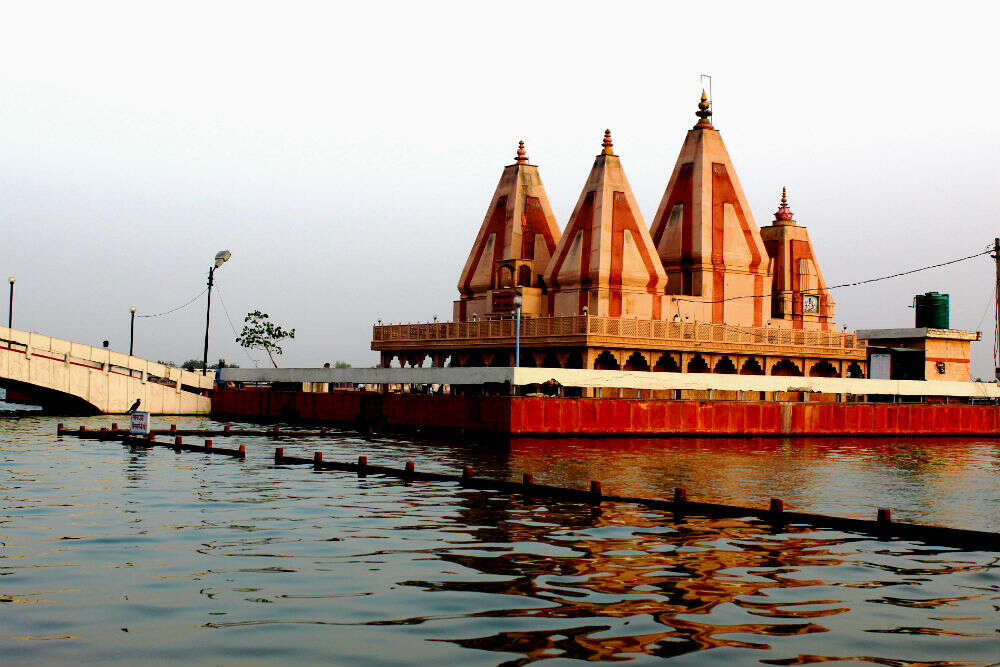
In the heart of Kurukshetra, the legendary land where the Mahabharata war was fought, lies a sacred water body that is revered not just for its physical expanse but for its immense spiritual significance — Brahm Sarovar. To the ordinary eye, it may seem like a large holy tank surrounded by ghats and pilgrims, but to the faithful, it is a gateway to moksha (liberation). Here, the water is not just a symbol of purity, but a means to cleanse the soul and attain spiritual freedom.
🕉️ Historical and Mythological Significance
The name ‘Brahm Sarovar’ itself suggests a divine origin — “Brahm” denotes the Supreme Creator, and “Sarovar” means lake or pond. According to ancient texts and oral legends:
- Lord Brahma is believed to have performed the first Yajna (sacred fire ritual) at this very place, marking the beginning of creation.
- It is said that this is the spot where the universe was conceived, making it the navel of existence in Hindu cosmology.
- During the Mahabharata, Kurukshetra was chosen as the battleground because of its spiritual sanctity, and Brahm Sarovar is believed to have held divine energy from that era.
🚿 The Waters That Cleanse the Soul
Devotees believe that a dip in Brahm Sarovar during solar eclipses, especially the Surya Grahan Snan, washes away all sins and grants spiritual liberation. This belief is rooted in the idea that cosmic energy aligns in a powerful way during eclipses, and bathing in such waters amplifies the benefits.
It is not just water — it is penance, forgiveness, and rebirth.
Pilgrims from all over India and even abroad gather here for sacred baths, chanting hymns, and offering prayers to their ancestors. The energy is palpable — a mixture of devotion, surrender, and hope.
🌅 Spiritual Experience at Brahm Sarovar
Visiting Brahm Sarovar isn’t just a ritualistic pilgrimage; it’s an experience that stirs the spirit. Here’s what makes it deeply transformative:
- Aarti at sunset: As the sun dips below the horizon, priests perform an elaborate aarti, the flames dancing against the water’s reflection — a moment of divine connection.
- Silence and reflection: Despite the crowd, one finds a unique kind of stillness, as if time itself slows down.
- Connection to ancestors: Many perform Pind Daan and Tarpan rituals here to honor their forefathers, fulfilling a karmic duty.
🏛️ Cultural and Architectural Beauty
Brahm Sarovar isn’t just sacred; it’s visually stunning:
- Sprawled over several acres, it has stone ghats, walkways, and a central island where mythological scenes are depicted.
- A large statue of Lord Krishna delivering the Bhagavad Gita to Arjuna stands tall, reminding visitors of the eternal message of dharma (righteousness).
- The complex is lit beautifully during festivals like Gita Jayanti, making it a spiritual spectacle.
🌍 Message Beyond Religion
While deeply rooted in Hindu beliefs, Brahm Sarovar represents something universally human — the search for meaning, peace, and purpose. Whether you are religious or spiritual, a seeker or skeptic, the atmosphere here has a way of touching the soul.
It teaches that salvation isn’t only about what lies beyond life, but about transforming oneself in the now — shedding ego, healing wounds, and embracing the divine within.
✨ Conclusion
Brahm Sarovar is not just water.
It is memory.
It is myth.
It is motionless time flowing like a river.
To bathe in it is not just to cleanse the body, but to purify the soul, to realign with dharma, and to reconnect with the universe’s original rhythm. In a world full of chaos, places like Brahm Sarovar remind us that true salvation lies within — and sometimes, it begins with water.
